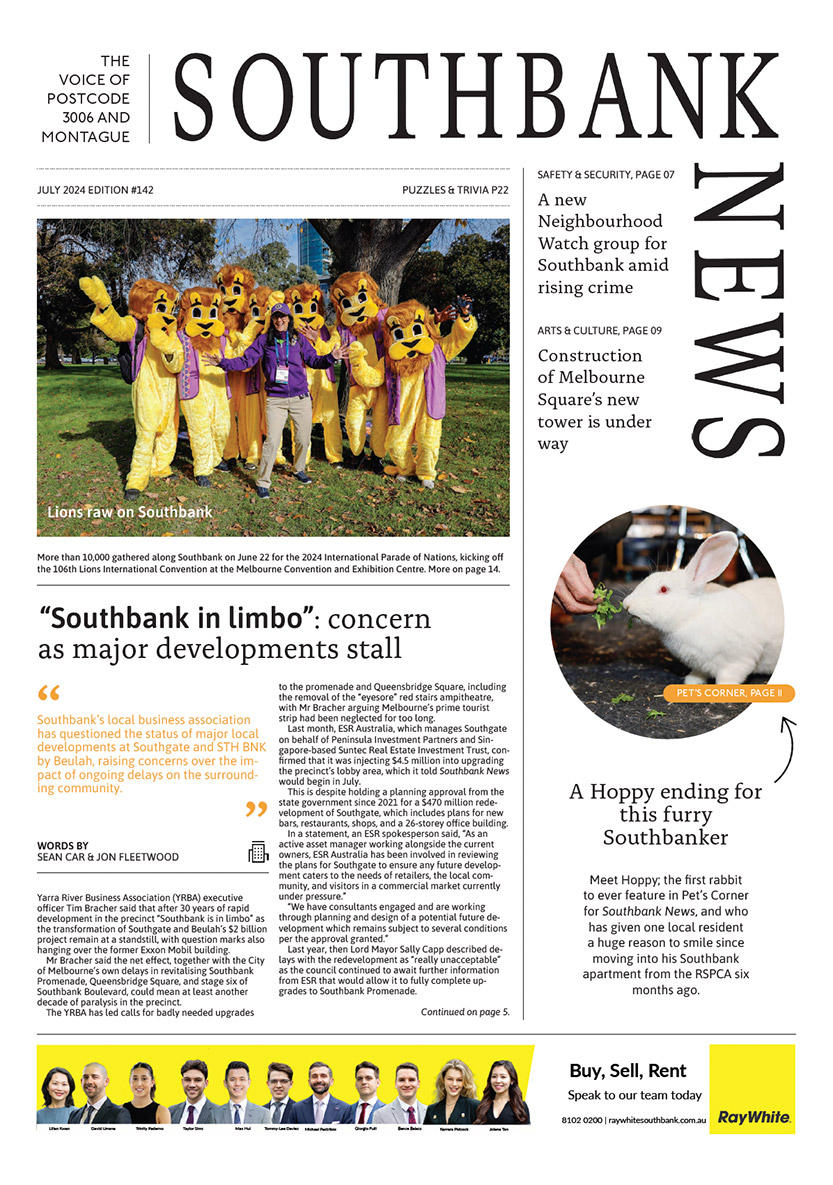Greening Southbank: seeding community pride and ownership
In the lively streets of Venice, community gardens bloom with more than just flowers; they blossom with pride and a palpable sense of ownership among the residents who tend them.
Whether it’s in a coop building, public housing or a private residence, each garden is a testament to community spirit, where locals not only cultivate plants but also nurture deep connections with their environment and each other.
That’s what I saw during my visit to Venice last year when I took a day out of my holidays to meet with the local council, planners and community and to learn how they do things differently.
At home, I spoke with members of the Southbank community to explore how we can infuse this same spirit into our own neighbourhoods. The challenges of green space in Southbank and the Hoddle Grid mean we must think outside the box, even when the City of Melbourne’s commitment to an urban park is delivered in the future.
The concept is simple yet transformative: empower residents and owners’ corporations to take the lead in greening the spaces in front of their buildings and throughout the neighbourhood.
Imagine stepping out of your home to a space you’ve planted and nurtured – a patch of green that’s yours not just in responsibility but in pride. This initiative aims to foster a welcoming, vibrant community space that reflects our collective commitment to environmental stewardship and community wellbeing.
This isn’t new, and there are successful and not-so-successful examples across the state. Some of the successes come in the form of community gardens, with examples in Southbank, Docklands and Kensington among others. Others include more progressive coop building initiatives or resident-led initiatives as part of the council’s urban forest program.
However, how can we do this more regularly and more effectively? Yes, there’s a quagmire of obstacles that need to be resolved, including insurance, legal, and costs – but the outcomes could be significant – community connection, pride, and wellbeing.
During my discussions, the enthusiasm was evident. Community members are eager to reclaim their civic spaces, to break from the cycle of stringent rules that often distance us from a true relationship with our public areas.
In Venice, the freedom to engage with communal spaces has cultivated a strong community bond and a shared responsibility for the local environment; it’s a model ripe for adaptation in Southbank and beyond.
This could be a shift towards community-led urban greening – it is not just about beautification, but rekindling a sense of ownership and pride in our public spaces that seems to have diminished over time. By involving everyone in the process, from planning stages to the planting of the last shrub (and its care), we can cultivate a more connected and engaged community.
I am committed to following up on this initiative and exploring all avenues to support it. I am curious to hear more from you on this call from community for action. What other changes do you wish to see in your neighbourhood? How else can we enhance the sense of community and belonging in our shared spaces?
Let’s rethink our public spaces together, turning Southbank into a lush, vibrant extension of our homes, where every corner reflects the people who live here. •

A new Neighbourhood Watch group for Southbank







 Download the Latest Edition
Download the Latest Edition